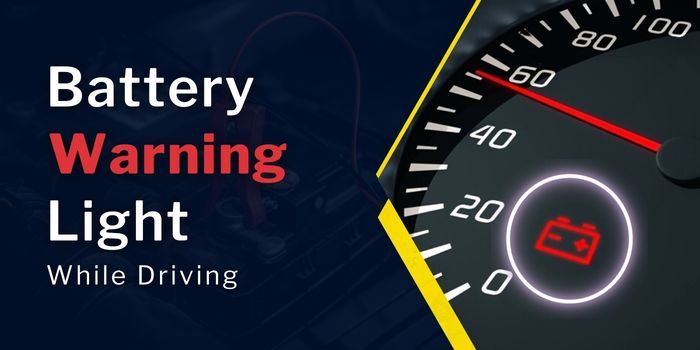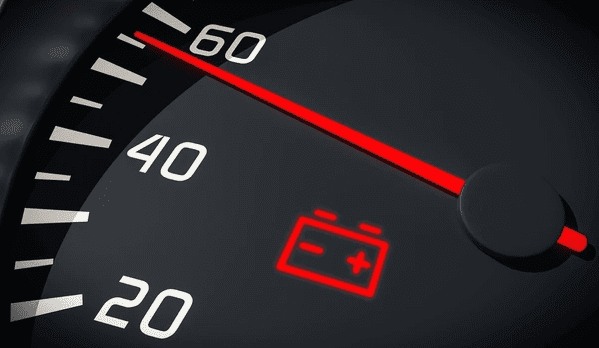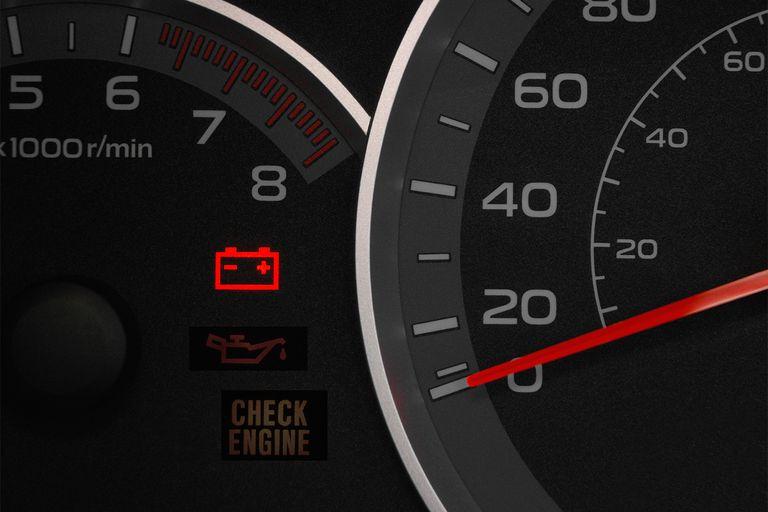Every car these days has a rechargeable 12-volt battery that powers up all the electrical components – the engine control unit (ECU), headlights, radio, ignition system, and other accessories. But, what does it mean when the battery light comes on? The battery is vital to the operation of a vehicle. So, it’s important to know if there is anything concerning when the battery light on in car.
Contents
What Does The Battery Light Mean?
The battery is the exclusive power source behind many functions in a vehicle. Each car has an indicator light on the dashboard that warns when the battery fails to recharge. There is a circuit that can count the voltage produced by the alternator. The battery light came on had the voltage been dropped.
The light only indicates a charging problem. If the battery light came on while driving and stays on, a broken alternator belt is the most likely culprit. Total failure of the alternator could be the reason too and it’s a more expensive fix than replacing the car battery.

The Reasons for Battery Light On In Car
The battery warning lights indicate the poor condition of the battery. There could be several reasons for the car battery light on while you are driving. The most common causes are:
1. Poor battery condition
The first thing you should check is whether there is a problem with the battery. It could have corroded or dirty terminals that cannot transmit power from the battery or a bad cell that is unable to receive charging. In that case, the voltage will drop, causing the battery light on dashboard to come on.
Cleaning the terminals is the primary solution but replacement of the terminal ends is the best option when a clean-up does not work. If the battery is bad, you should go for one of the best car battery units to avoid this problem in the future.
2. Examine the alternator
If the battery checks out fine, you should move into the alternator. The device keeps the battery charged up and supplies power to the electrical components when the engine is running. Checking the device with a multimeter should show a reading between 13.6 to 14.6 volts. A reading of less than 12 volts will cause the battery light on in car. There could be two reasons for the malfunctioning alternator:
A faulty voltage regulator
When the alternator cannot supply adequate power or is completely dead at low RPM, it is mostly because of a damaged voltage regulator. Depending on the make and model, it may or may not be possible to replace this component.
A similar symptom could also be the result of installing high-wattage accessories. For example, if you install high-wattage headlights and rear lamps in an old car, the alternator is unlikely to be capable of handling such high-wattage accessories. So, if the car’s electrical components are drawing more amperage than the alternator can produce, you will see the battery light on dashboard is on.
A slipping alternator belt
Another component that meddles with the regulator is a slipping alternator belt or an almost failed alternator. The belt could be loose, worn out, or damaged. A rare but not unheard of cause is the belt being spilled with some kind of slippery liquid such as oil, brake fluid, or coolant.
When the car is at idle, rev the motor abruptly. If you hear a squealing noise, be sure that a slipping belt is the source of the problem. The solution is to tighten the loose belt or replace if it is beyond repair.
A faulty alternator will not only cause the battery light on in car but also disrupt the functions of a few other necessary parts such as the headlights and ignition system. Immediate action is required in this case because a delay will cause the car to be dead at one point.
3. Bad wiring
The wiring that comes out of the battery could be damaged or frayed. Such a condition interrupts the flow of electricity and triggers the battery warning light. Changing the wires will make the light go off.
4. Bad battery cable

Another possibility of the battery light on in the car is the bad battery cable. Battery cable plays an important role in delivering the power from the battery to the vehicle itself. If the power can’t get to the vehicle, it’s caused by the bad cable. Replacing a new cable is a good choice.
5. Losing battery cable
You can check the battery cable. It should fit snugly around the battery terminals to provide a good connection. If not, you may lose the battery cable. What you need to do is tighten the cable with a wrench or pliers so that it fits snugly. Some battery bolts can strip out if over-tightened, so be sure not to overdo it.
6. Too many accessories
The battery can be run off because of the extra use of accessories. vehicle’s accessories run off of the alternator belt, which is also how the battery is charged, using them in excess can siphon too much electricity, leaving the battery “hungry”.
7. Bad ground trap
When the ground trap is damaged, the battery may not be able to charge. That causes the battery light staying on. Moreover, you will notice a specific subset of components in a localized area start to act up if a ground strap is loose or corroded.
How Long Can You Drive With Battery Light On?
The engine will still be running when the car battery light on because the battery will still have some energy stored in it. The car will consume that energy and keep running until the battery is dead. When this happens, not a single component in the vehicle will work. Also, if you stop the engine for any reason, there is no way to restart it since the battery does not have enough charge to power up the starter motor.
It means that you will still have time to drive to a repair shop or your garage when the battery light comes on but trying to cover a long distance will be suicidal since the battery will eventually fail and leave the car dead.
Driving with the battery light on is not safe. The vehicle is unlikely to run as it is in normal condition because it keeps losing power due to a poor battery, bad wiring, corroded terminals, or a malfunctioning alternator.
So, continuing to drive with the battery light on can potentially lead to a breakdown if the battery is drained and not recharged. It’s advisable to address the issue as soon as possible to prevent further damage to the electrical system and avoid being stranded on the road.
Read more:
What To Do When Battery Light Comes On?
The engine will still be running when the car battery light on because the battery will still have some energy stored in it. The car will consume that energy and keep running until the battery is dead. When this happens, not a single component in the vehicle will work. Also, if you stop the engine for any reason, there is no way to restart it since the battery does not have enough charge to power up the starter motor.
It means that you will still have time to drive to a repair shop or your garage when the battery light comes on but trying to cover a long distance will be suicidal since the battery will eventually fail and leave the car dead.
Driving with the battery light on is not safe. The vehicle is unlikely to run as it is in normal condition because it keeps losing power due to a poor battery, bad wiring, corroded terminals, or a malfunctioning alternator.
The battery light might be on in the car when you are in a remote place or far away from any auto servicing shop. What should you do in that situation? There are two ways:
1. Ask for help
Call a towing service and have the vehicle towed to the nearby garage where a mechanic can examine the related components and find out the cause of the problem.
2. Turn off unnecessary stuff
Turn off as many electrical accessories as possible. Reducing the consumption will increase the distance you can cover before the engine dies out. Turn off the heater or AC, stereo system, radio, power windows, and a couple of other devices that are not necessary to drive the car.
Whatever you do, don’t turn off the engine until you’ve reached your destination! The starter motor takes a lot of electricity and if there isn’t enough charge in the battery then the vehicle won’t start. Keep an eye on your temperature gauge, as overheating can be an associated issue with charging problems.
Watch more:
Final Words
The battery is a key device for running the car and a bunch of electrical equipment. A battery light on in a car sometimes makes us wonder what does the battery light mean. It is a signal of many possible problems related to the battery. Any issue should be given utmost attention and solved with no delay.
If you have any doubts, do not hesitate to leave a comment below. And don’t forget to follow our maintenance tips to better repair your car.



